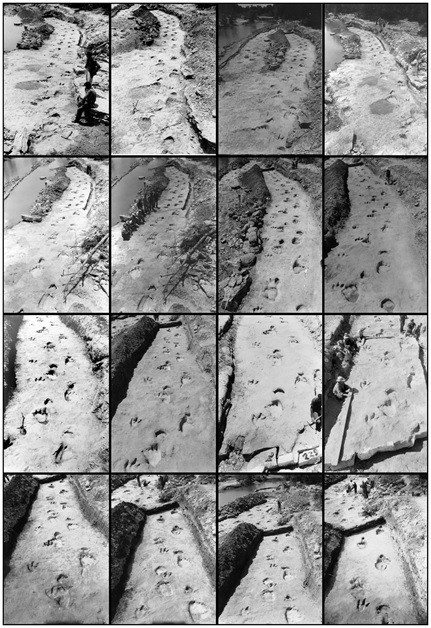Scientists Reconstruct Dinosaur Chase from 200 Million Year-Old Footprints

Scientists have reconstructed a dinosaur chase using the footprints of theropod and sauropod dinosaurs.
Researchers from the Royal Vetinary College at the University of London applied photogrammetric techniques to photographs taken 70 years ago by Roland Bird, an American palaeontologist.
The tracks, from the Paluxy River in Texas, were excavated and preserved by Bird. Yet some of the trackway was lost post-evacuation, when paleontologists removed the tracks and divided them into blocks.
The trackways provided evidence of sauropod herds, said researchers.
The area in which they were discovered - the river bed near Glen Rose, at the Dinosaur Valley State Park - is renowned for its treasure trove of fossilised prints.
Peter Falkingham, a research fellow at the Royal Vetinary College, said: "In recent years, technology has advanced to the point where highly accurate 3D models can be produced easily and at a very little cost just from digital photos, and this has been revolutionising many different fields.
"We can apply that technology to specimens, or even entire sites, that no longer exist but were recorded photographically is extremely exciting."
Prior to removing the tracks, Bird documented the original site with photos and maps. In order to digitally reconstruct the site as it was pre-excavation, scientists scanned 17 of Bird's pictures to develop a model. It was then compared to maps hand-drawn by Bird.
As the photographs come from a number of stages throughout the excavation process, including images which contain people or tools, creating the model proved to be difficult.
Yet despite the variation between the photos and the maps, the team was able to recontruct and view the entire sequence - which stretches along 45m - in 3D.
It is hoped that the study will help others digitally recreate paleontological, geological or archaeological specimens that have been lost or deteriorated over time, but for which old photographic documentation still exists.
The study was published in the journal Plos One.
© Copyright IBTimes 2025. All rights reserved.






















